The Feria of Cordoba (the fair)
In the month of May, amongst the other celebrations such as "las Cruces", "la Batalla de las Flores" and the "festival de los Patios", the city of Cordoba is buzzing. However, anyone who is staying in Cordoba in May is not out of the woods yet. In fact, every year, during the last week of May, the famous feria takes place (it's a fair). For a week, the city literally almost stops working, and everyone rushes around to make the most of this event.
Transport
The feria of Cordoba is relatively "central": it takes place on the opposite side of the river Guadalquivir which goes through the historic centre. That doesn't stop the most eager to go on foot, seeing as though it's easily doable (that depends where you live, of course). However, since I have experienced this myself - I recommend anyone going in heels to use the shuttle service which is put in place around the city just for the feria. The walk there is still lovely (well at least the way there), especially if you go over the Roman bridge, a magnificent monument in Cordoba. The journey on foot, during the night, also lets you see many decorations which light up and it contributes to the magical atmosphere of the feria.
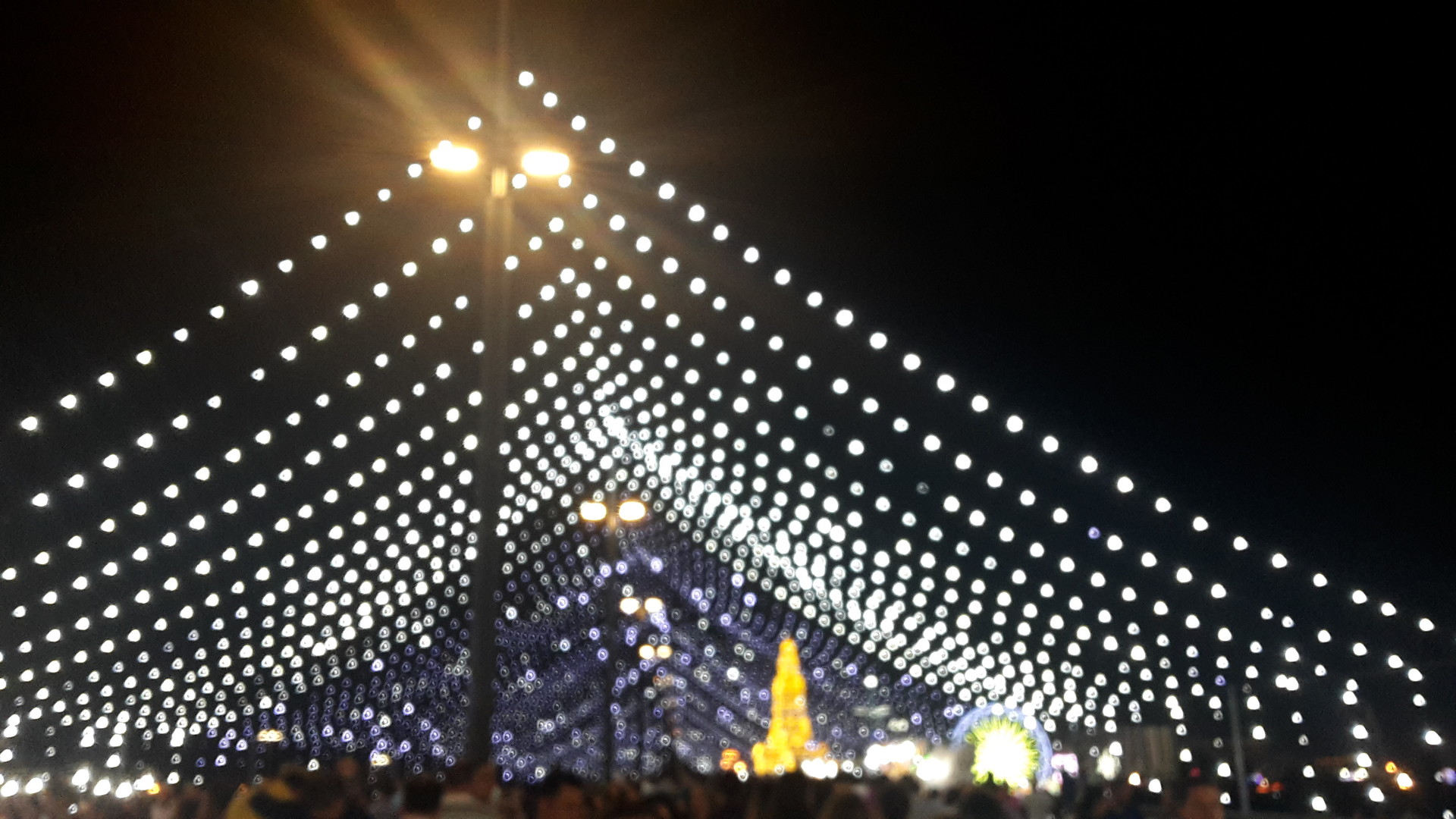
Distinctive features
Even though the feria of Cordoba isn't as famous as the feria in April which takes place in Seville, it's still quite an important event. I definitely believe my Italian flatmate who has also been to the fair in Seville, when she says that the one in Cordoba is a lot less exclusive and accessible to everyone. In fact, in Seville, to get inside most of the popup bars, you have to pay. In Spanish, we call these bars "casetas". However, in Cordoba they're all free.
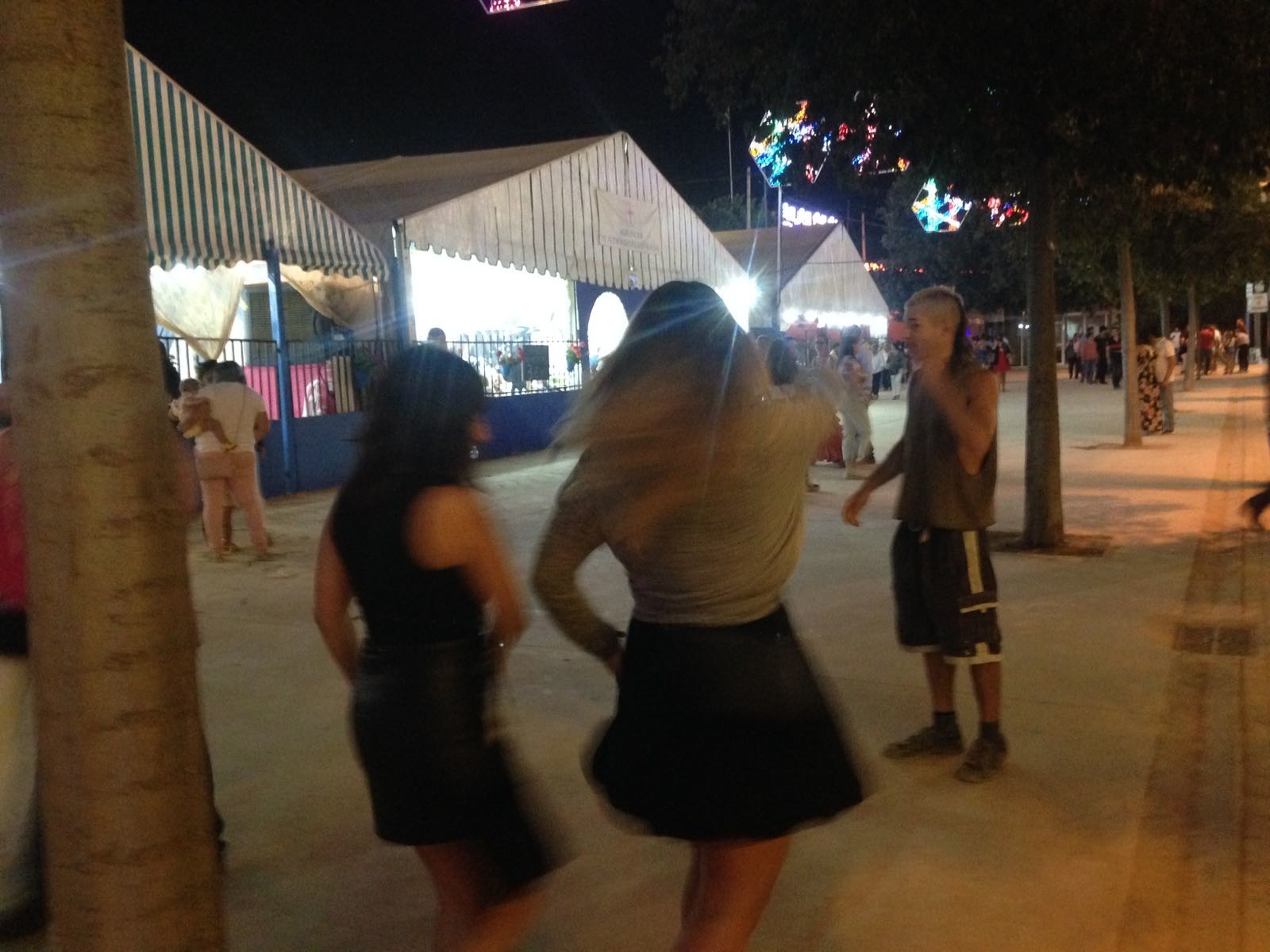
One of the most typical features of all fairs in Andalusia is the great big "portada" (gateway) at the entrance to the fair. Cordoba isn't an exception to that. In the day and at night, it's often the main reference point for people who get lots between all the casetas, as it's difficult to distinguish one from another.

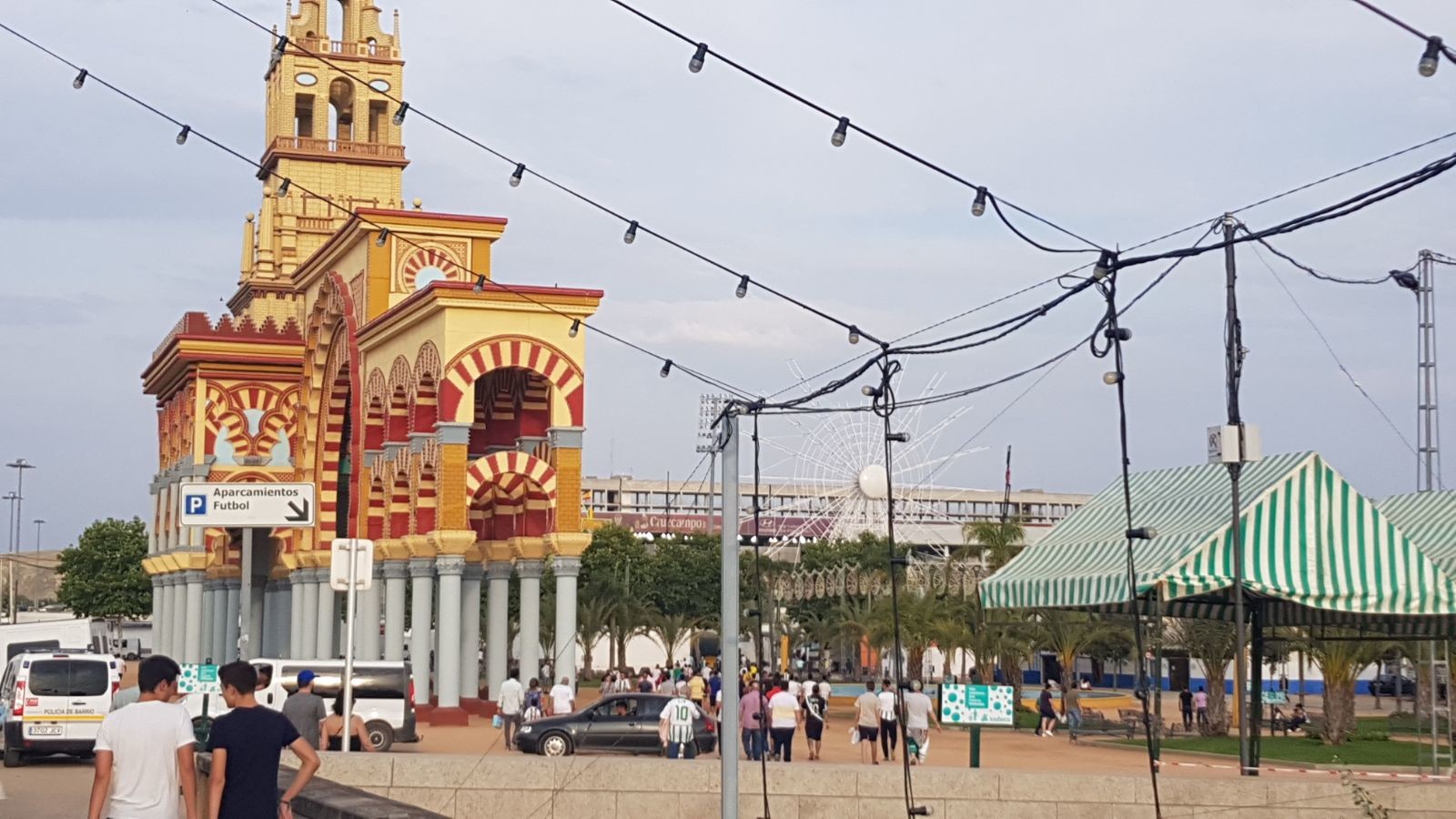

The must-sees at the feria
During the day, the feria of Cordoba is the perfect place to dance the sevillana. Unfortunately, I failed to learn this traditional dance, but if - unlike me- you have good coordination, you'll at least be able to learn the most basic steps to the sevillana (as there are many different versions). After a month of practising (as the Erasmus societies such as ESN and Erasmus Family offer sevillana dance lessons), my Italian flatmate could dance quite well, well enough to have the guts to show off her talent to the public during the feria.
One of the many appeals to this event is also the traditional outfits, especially the dresses the women wear, the famous "trajes de feria". They're long close-fitting colourful dresses, which fits tightly over your legs and the bottom part is often frilly. I would say that it's very common for Andalusian women to own at least one of these types of dresses. The price can sometimes go up to more than 1000 euros, for the more expensive ones (500 euros is considered the "normal" price to pay for a dress like that). I was lucky, because my Spanish flatmate let me try on one of her beautiful dresses, even if that one was a little too tight-fitting for my taste.
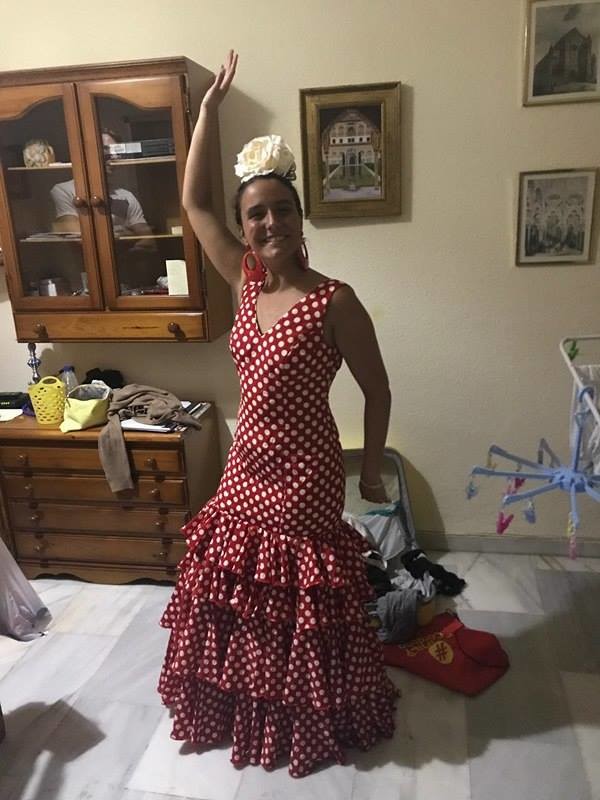
This outfit is complete with a flower in your hair, stunning earrings, and a "mantecillo" (a sort of triangular wrap to place over your shoulders).
A rhythm to grasp
During the day, the feria mainly revolves around dancing, especially traditional Spanish dances, such as the sevillana but also the flameno for example. How you wear your hair is also one of the important aspects of the feria.
When night falls, it all revolves around reggaeton which is played in most of the casetas, where you can dance the night away until early hours of the morning. For thrill-seekers, and for those who like taking a break from dancing, there's an area in the feria which is like a fairground with lots of rides and attractions.
In general, a day at the feria is very fast-paced due to the numerous glasses of alcohol which people will drink. And in terms of drink, there's one drink you have to try which is called "rebujito". It's a mix of manzanilla (very bland Spanish wine) and a fizzy drink like Lemonade or Sprite.
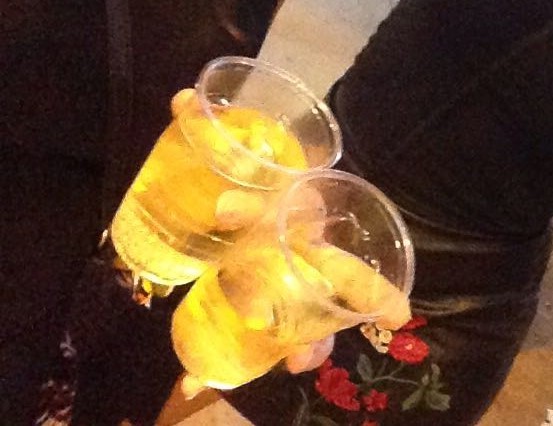
It's also common (at least for students) to bring lots of bottles alcohol with them (preferably with a mixer too), which you can drink just outside the feria along the river, before going inside the actual fair ground.
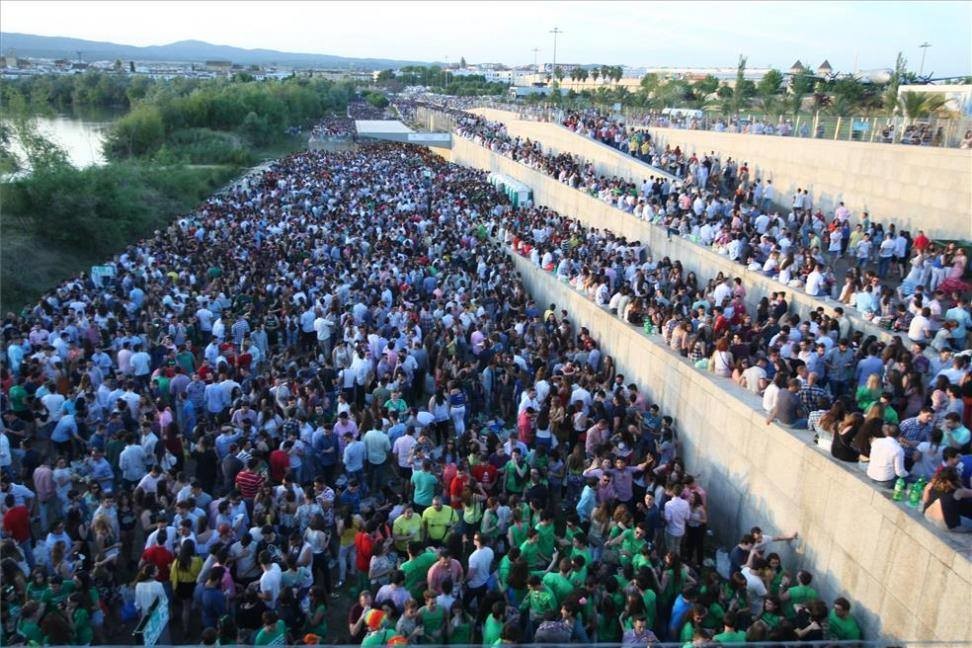
On the Wednesday, the feria is a special day for students: the tradition is for students to group up along the river into their different "carreras" (different university courses) or into their classes, and wear a T-shirt which shows their group. This year, the Erasmus society in Cordoba called Erasmus Family had a green T-shirt (although a bit too thick because of how hot it was in May), which said "I'm not Erasmus, Yo soy Erahmuh". (It's making fun of people in Andalusia who don't pronounce the "s" at the end or in the middle of words).
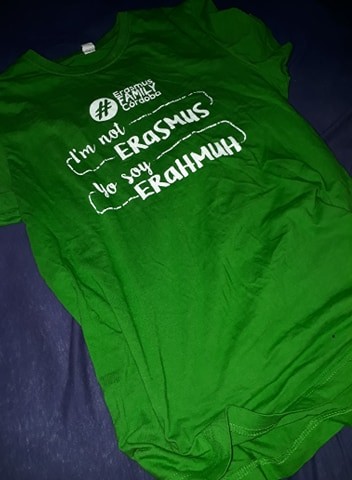
I must highlight how incredible it is to see Spanish people party so hard, and it was clear to see that during the feria. I remember some of my classmates, who went there every day of the week, from the beginning of the afternoon to the early hours of the morning. That's quite a heroic performance if you ask me.
Advice
Other than drinking too much, you must also be careful of some other things during the feria, especially of your belongings. I think that almost half the Erasmus students in Cordoba had their phones stolen from them during that week.
However, the feria is still a must-see for all self-respecting Erasmus students in Cordoba, to go there with the intention of exploring even more of the Andalusian culture or simply just to party
Photo gallery
Content available in other languages
- Français: La feria de Cordoue
- Español: La feria de Córdoba
- Italiano: La fiera di Cordova
Want to have your own Erasmus blog?
If you are experiencing living abroad, you're an avid traveller or want to promote the city where you live... create your own blog and share your adventures!
I want to create my Erasmus blog! →
























Comments (0 comments)